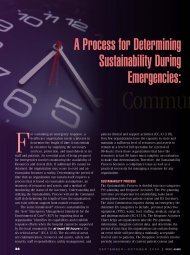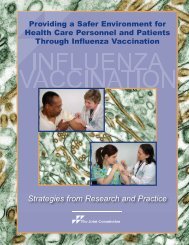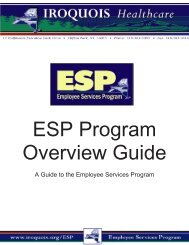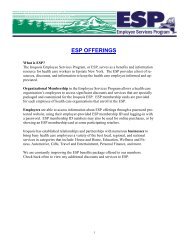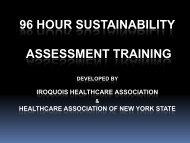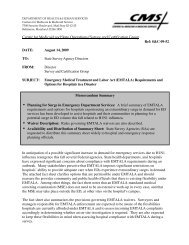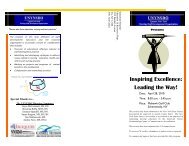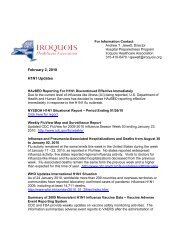NYS Public Health Legal Manual: A Guide for Judges, Attorneys ...
NYS Public Health Legal Manual: A Guide for Judges, Attorneys ...
NYS Public Health Legal Manual: A Guide for Judges, Attorneys ...
Create successful ePaper yourself
Turn your PDF publications into a flip-book with our unique Google optimized e-Paper software.
NEW YORK STATE PUBLIC HEALTH LEGAL MANUAL § 1.123<br />
and court personnel, those administrative steps may include centralized<br />
hearings, case consolidations, the holding of multiple proceedings<br />
be<strong>for</strong>e a single judge, and the adjustment of priorities in the<br />
hearing of cases (especially those arising as a direct result of the<br />
emergency). And where the exigencies of holding isolation and<br />
quarantine hearings <strong>for</strong> infected individuals may require the movement<br />
of the hearing to a local site other than the courthouse, court<br />
administrators may work with local authorities to do so as well.<br />
Because court administrators remain bound by existing law, the<br />
administrative response to public health emergencies affecting court<br />
operations may have to be supplemented by adjustments to those<br />
laws, especially to the procedural requirements of the Criminal Procedure<br />
Law [CPL] and the CPLR. These adjustments can be made<br />
through the Governor’s power to suspend laws pursuant to a declaration<br />
of emergency. Exec. Law § 29-a(1). The management of cases<br />
by the courts during a public health emergency thus requires a cooperative<br />
ef<strong>for</strong>t of the Chief Judge and Chief Administrative Judge<br />
with the Governor—the <strong>for</strong>mer to reallocate court resources, and the<br />
Governor to suspend those statutes, consistent with the rights of the<br />
parties to fair hearings, that restrict court administrators from successfully<br />
meeting the challenge of operating the courts during a<br />
disaster emergency. See, e.g., Executive Order No. 113.7, September<br />
12, 2001 [suspending CPLR statutes of limitations and CPL periods<br />
of trial readiness during the emergency caused by the closing of<br />
courts and destruction of law offices in New York County as a result<br />
of the 9/11 attacks]; Executive Order 113.28, October 4, 2001 [reinstating<br />
statutes of limitations except <strong>for</strong> persons “directly affected<br />
by the disaster emergency”].<br />
Should court administrators have to take steps that include the<br />
centralization of hearings and the consolidation of cases, the judges<br />
hearing cases under those conditions have broad authority to devise<br />
court procedures to facilitate the hearing of those cases. Section<br />
2-b(3) of the Judiciary Law permits judges “to devise and make new<br />
process and <strong>for</strong>ms of proceedings,” and the courts have cited this<br />
statute, together with a judge’s inherent rule-making powers as<br />
recognized in section 30 of Article VI of the State Constitution, in<br />
69




